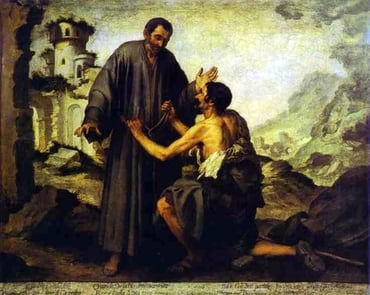
Up until now, this parable has advocated gleaning true ideas from evil sources. This, the final verse of the parable, warns that we have to make sure we take only the ideas, and not the evil they inspire in others. Ultimately they have to fit in as part of knowledge from the Lord, not knowledge from the world.
A "servant" here represents exterior things – our actual actions. They are controlled by a "master," or a system of ideas.
There are two potential masters here. "God" represents truth from the Lord; "mammon" represents truth from other sources, without any connected desire for good. Ultimately, we can only use one to guide our external actions. If we choose to follow the Lord (by "loving the one") we will feel an aversion to ("hate") the jumble of disconnected ideas represented by mammon. If we decide to trust ourselves to figure what's good (being "loyal to one"), we will lose touch with real truth and see little value there ("despise the other).
So we might benefit from mammon in the short run, but God has to be the ultimate master.
(Referenser: Apocalypse Explained 847 [3]; Arcana Coelestia 3875 [3], 9093 [2], 9210 [3]; True Christian Religion 437)






